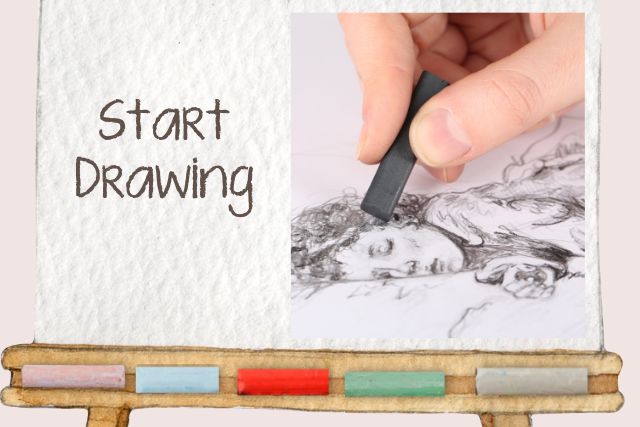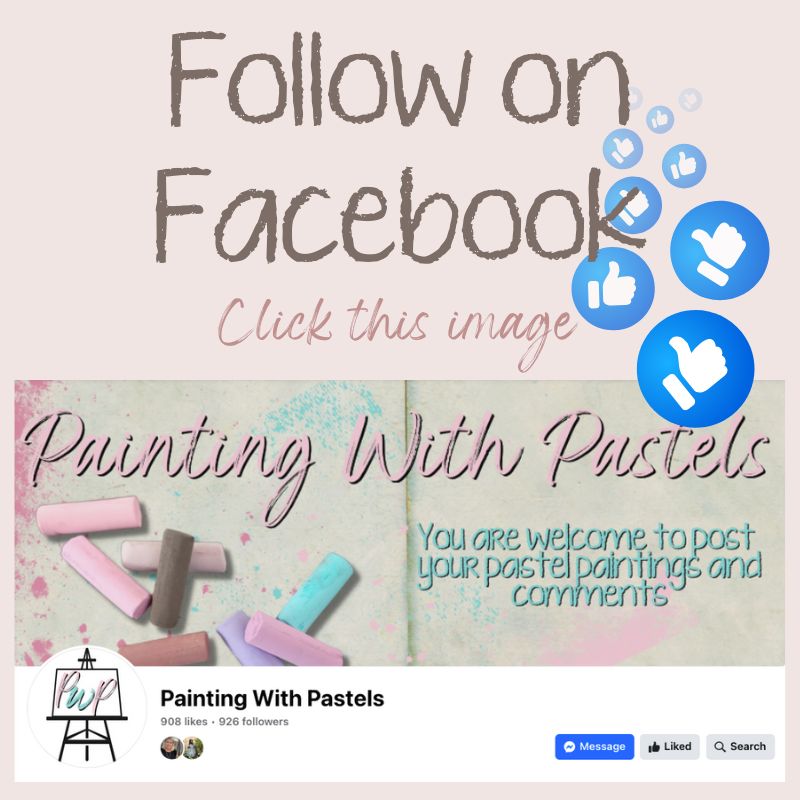One of the attractions of working with pastels is that there’s nothing stopping you from just diving in. If you have paper and some pastel sticks, you can get started immediately without needing to learn any ‘correct’ way of doing things. However, once you’ve gotten some practice, you might find the following advice helpful in taking your art to the next level.
Drawing techniques
The two most basic drawing techniques in pastels are the simple linear stroke and the side stroke. The linear stroke, which is just what it sounds like, is what everyone starts out doing, and it’s really useful for sketching outlines, for hatching and cross-hatching, and for adding a different colour on top of an area of solid colour which you’ve already put down on the surface.
A side stroke involves using the side of a pastel stick to block in a large area of colour. A whole pastel stick is often too big for side stroking, so break one in half first. Side strokes are effective for putting down a lot of colour quickly, which you might want to do, especially in the preliminary stages of a new painting. Press firmly, and you’ll get intense colour, while a lighter stroke will allow more of the underlying surface to show through the pastel.
Drawing fine lines
For really fine lines and details, it’s better to use hard pastels or pastel pencils rather than soft pastels, as they’re a lot better suited to the job. If, for some reason, you want to draw fine lines using a soft pastel stick, consider breaking a piece off of it and sharpening the end of this fragment into a point using a craft knife (NB: you’ll have to re-sharpen it as you go).Sketching
While not strictly necessary, sketching the outline of your prospective artwork before you commit to it fully is a very good idea. It will allow you to see how well your composition works and give you the opportunity to change it if you’re not happy. Sketching can be done freehand, or if you want precision, lay out a faint grid first and work according to that. Use either a light-coloured hard pastel or just an ordinary graphite pencil.
Consider your surface carefully
Your choice of what to paint on the surface is more significant with pastels than it is with other mediums. Pastels rarely completely cover the surface, so some of the underlying colour and texture of the surface will show through. This means that the surface becomes part of the artwork. The colour of the surface is the most important consideration here. Briefly, it’s usually best to choose a colour that matches or complements the overall colour of the painting that you intend to make on it. Plain white is actually often a poor choice – instead, choose a colour that you want as a ‘base coat’, and you’ll get better results.
If you’re wanting step by step lessons head over to the Shop and view my books.
I’d appreciate you sharing this article:




0 Comments